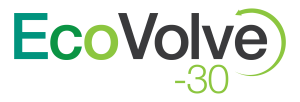This week, Rohrer hosted our 15th annual blood drive with LifeSource at Rohrer’s Addison facility. The organizers were Lori Navarrete, Payroll Administrator, Maty Solís, HR Assistant. and Dora Marquez, Director of HR (pictured, left to right).
Throughout the year, Rohrer contributes to our communities through many initiatives. We list “Purpose” among our company values. By this we mean, “We strive to enrich our employees, their families and communities where we live… and have fun doing it.”
According to LifeSource, someone needs blood every two seconds – premature infants, cancer patients, burn or car accident victims, and many others. Blood products are perishable, so the need for donations is ongoing. During a typical donor program, participants donate approximately one pint of whole blood, the most common type of blood donation. This can be separated into three components: red blood cells, plasma, and platelets. One individual’s donation can save up to three lives!

Pictured here is Josh White, a designer in Addison. He’s giving a special double red blood cell donation through a machine called ALYX. Donors who have blood types O, A, and B and meet certain age, height, and weight requirements are asked to consider becoming double red blood cell donors. The ALYX machine separates Josh’s blood as he donates, retaining red blood cells and returning the remainder. Josh’s donation takes a little extra time, and he can only donate every 16 weeks (regular donors wait 8-12 weeks). The phlebotomist Elizabeth tells us that Josh’s donation will probably help babies.
Why People Donate:
Donors are motivated by a variety of reasons. Rohrer employees shared why they donate:
Fred Forte, Production Manager, said, “I’m thinking of my father-in-law. I feel like – if we can help, we should. A lot of people need blood, and we’ve got it. So why not donate?”
Jasmine Rivera, Quality Control Technician, said she came, “To save some lives. I always donate.”
Guy Ulmer, Director of Client Success and Technology, and first-time donor answered with a smile, “Peer pressure from my co-workers – this is the year I’m doing it!”
Marc Ardiente, Manufacturing Engineer, said, “It’s good to see co-workers come together and ‘join the fun.’ I’m also a universal donor. It’s the right thing to do.”
Ricky Mendez, Set-Up Technician, has donated every time for 15 years straight. He said, “I have a lot of family who have been sick. If it’s not us, they need someone. They need us. Plain and simple.”


[Photos – Jasmine, and Mark(left) with Ricky (right)]
Plus, everyone gets a coupon for a free pint of frozen custard at Culvers.
Does the thought of donating blood make you queasy? You’re certainly not alone. Reading some of these inspirational stories from the LifeSource website may convince you to give it a shot – like the stories about a newborn’s mother whose life was saved with 26 blood transfusions after a traumatic birth experience, and a cancer patient who had to wait for a platelet transfusion in order to start chemotherapy.
How to plan YOUR OWN EVENT:
As the project organizers, Dora, Lori, and Maty each have different roles for the event. Dora manages the communication including establishing and sharing the goal of 30 donations. Lori manages most of the project including coordinating with LifeSource, setting up the schedule and locking down all the logistics. Maty ties up the loose ends, posting reminder signs in all the facilities and managing the raffle. All three spent the morning of the drive walking through the office and plants making a final convincing push to encourage people to donate. Almost 18% of Illinois employees participated, in-line with the turnout of some of our best years. Rohrer beat the day’s goal, reaching 32 donations.
If you’re in the Chicagoland area and interested in partnering with LifeSource for a company blood drive, here’s a link to their page. Outside of Chicago, you can contact the American Red Cross. The keys to hosting a blood drive are: recruit an internal team (2-3 people), pick a space (large open room like a conference room – or a parking space for the mobile drive), schedule a date, and make it easy for employees to donate.



